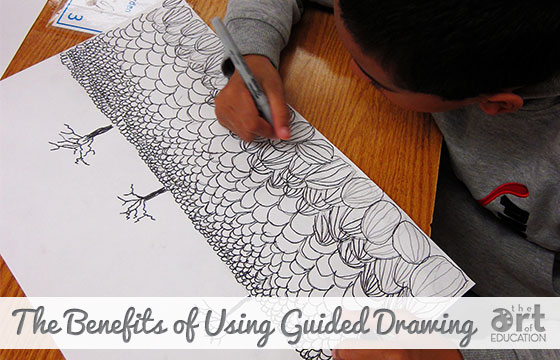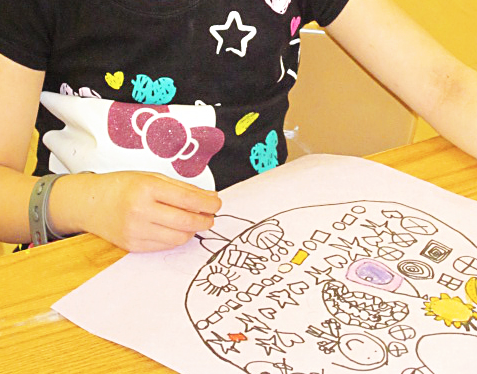When I first started teaching, I never thought I would be the kind of teacher that would be in front of the room leading a step-by-step drawing. Boy, was I wrong! Guided drawing has become the cornerstone of much of my 2D teaching. With a lot of trial and error, I have found just the right balance between those draw-along strategies and a more open-ended emphasis.
There are a few things to keep in mind when finding the right balance for you in your classroom.

First, open-ended lessons are successful when students have some experience to draw from. Your littlest students need you to give them those tools before they can jump into the art deep end and feel ok about it. Once they’ve been guided through a few drawings, they can start to use what they’ve learned to make creations of their own. It feels so good when I see students using a trick or shape they learned in a previous lesson to create something new!
As your students get a little older, they may still crave the structure and success of a guided drawing or painting, but show signs of wanting to spread their wings.
Oh, those classic middle children tendencies, you gotta love ‘em! This a great time to step your students through the beginning structure of a composition, then let them fill in the details from there. Drawing a portrait? Guide them through the shape of a head, then show them ten different ways to make each feature. Kind of like a “Choose Your Own Adventure” in the art room.

Finally, the big kids: my upper elementary students are my most self-conscious about their drawing abilities, and therefore I use a lot of the strategies that work with my youngest students. It sounds counterintuitive, but revisiting those tastes of success really works for us! For the older students, guided drawing lessons are great vehicles through which to teach any number of concepts or techniques. If they feel more comfortable in the drawing they’ve started with, there is a good chance they’ll feel more comfortable with risk-taking in other aspects of the work.
Guided drawing may start with teaching students the basics of “above”, “bigger”, or “draw a small oval”, but those directions can be very sturdy building blocks on which to build a solid and secure foundation of drawing knowledge and art confidence.
What are your favorite guided drawing techniques?
Do you prefer more open-ended lessons?
Magazine articles and podcasts are opinions of professional education contributors and do not necessarily represent the position of the Art of Education University (AOEU) or its academic offerings. Contributors use terms in the way they are most often talked about in the scope of their educational experiences.




